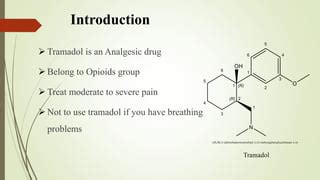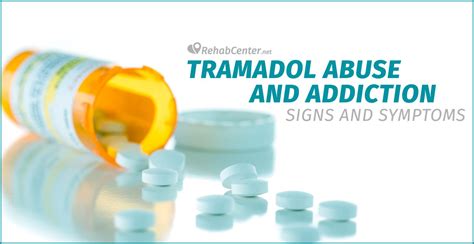Intro
Discover key facts about Tramadol, a potent pain reliever, including its uses, side effects, and interactions, to ensure safe medication management and avoid addiction risks.
Tramadol is a medication that has been widely used for its analgesic properties, helping to relieve moderate to moderately severe pain. It's a synthetic opioid, which works by binding to opioid receptors in the brain, altering the way the body perceives and responds to pain signals. Despite its effectiveness, tramadol is not without controversy and potential risks. Understanding more about tramadol can help individuals make informed decisions about its use.
The importance of discussing tramadol lies in its widespread prescription and use. Many people are prescribed tramadol for various types of pain, including chronic pain, which can be debilitating and affect all aspects of a person's life. However, the opioid crisis has highlighted the need for caution with all opioid medications, including tramadol. By exploring the facts about tramadol, individuals can better understand its benefits and risks, making them more aware of how to use it safely and effectively.
Tramadol's mechanism of action is complex, involving not just opioid receptor binding but also the inhibition of the reuptake of serotonin and norepinephrine, neurotransmitters that play a role in pain perception. This dual action contributes to its efficacy in managing pain that is not adequately controlled by other types of analgesics. Moreover, tramadol is often considered when other opioids are not suitable due to its relatively lower risk of dependence compared to stronger opioids, although this does not mean it is without risk of abuse or dependence.
Introduction to Tramadol

Pharmacokinetics of Tramadol
The pharmacokinetics of tramadol, which include its absorption, distribution, metabolism, and excretion, play a crucial role in its efficacy and safety profile. Tramadol is well absorbed after oral administration, with its peak plasma concentrations reached within two to three hours. It undergoes extensive first-pass metabolism, primarily in the liver, where it is metabolized into several metabolites, one of which, O-desmethyltramadol (M1), is pharmacologically active and contributes significantly to the drug's analgesic effects.Benefits of Tramadol

Risks and Side Effects of Tramadol
Despite its benefits, tramadol is associated with several risks and side effects. Common side effects include dizziness, nausea, constipation, and headache. More serious side effects can include seizures, especially in individuals with a history of seizure disorders, and serotonin syndrome, a potentially life-threatening condition caused by excessive levels of serotonin in the body. The risk of dependence and addiction, although considered lower than with other opioids, is still present, particularly with long-term use or in high doses.Tramadol Use and Abuse

Regulation and Monitoring of Tramadol
Given the risks associated with tramadol, regulatory agencies and healthcare providers have implemented measures to monitor its use more closely. In the United States, for example, tramadol is classified as a Schedule IV controlled substance, indicating that it has a lower potential for abuse compared to Schedule III drugs but can still lead to physical dependence. Healthcare providers are advised to use caution when prescribing tramadol, especially to individuals with a history of substance abuse, and to monitor patients closely for signs of misuse or diversion.Alternatives to Tramadol

Future Directions in Pain Management
The future of pain management is evolving, with a focus on developing therapies that are effective but have a lower risk of abuse and side effects. Research into new analgesics, including those targeting specific pain pathways, is ongoing. Additionally, there is a growing interest in personalized pain management, tailoring treatment to the individual's genetic profile, medical history, and specific type of pain. This approach aims to improve efficacy while minimizing risks.Conclusion and Next Steps

Final Thoughts on Tramadol
The discussion around tramadol highlights the need for a balanced approach to pain management, one that considers the individual's overall health, the type and severity of pain, and the potential risks and benefits of different treatments. As research and development continue to advance the field of pain management, it is crucial for patients, healthcare providers, and regulatory agencies to collaborate in ensuring that medications like tramadol are used responsibly and effectively.What is tramadol used for?
+Tramadol is used to relieve moderate to moderately severe pain.
Is tramadol an opioid?
+Yes, tramadol is a synthetic opioid.
Can tramadol be addictive?
+Yes, tramadol can be addictive, especially with long-term use or in high doses.
What are the common side effects of tramadol?
+Common side effects include dizziness, nausea, constipation, and headache.
Are there alternatives to tramadol for pain management?
+Yes, alternatives include other analgesics, physical therapy, and non-pharmacological approaches.
We invite you to share your thoughts and experiences with tramadol and pain management in the comments below. Your insights can help others understand the complexities of this topic and make informed decisions about their health. If you found this article informative, please consider sharing it with others who may benefit from this information. Together, we can work towards a better understanding of pain management and the safe use of medications like tramadol.
